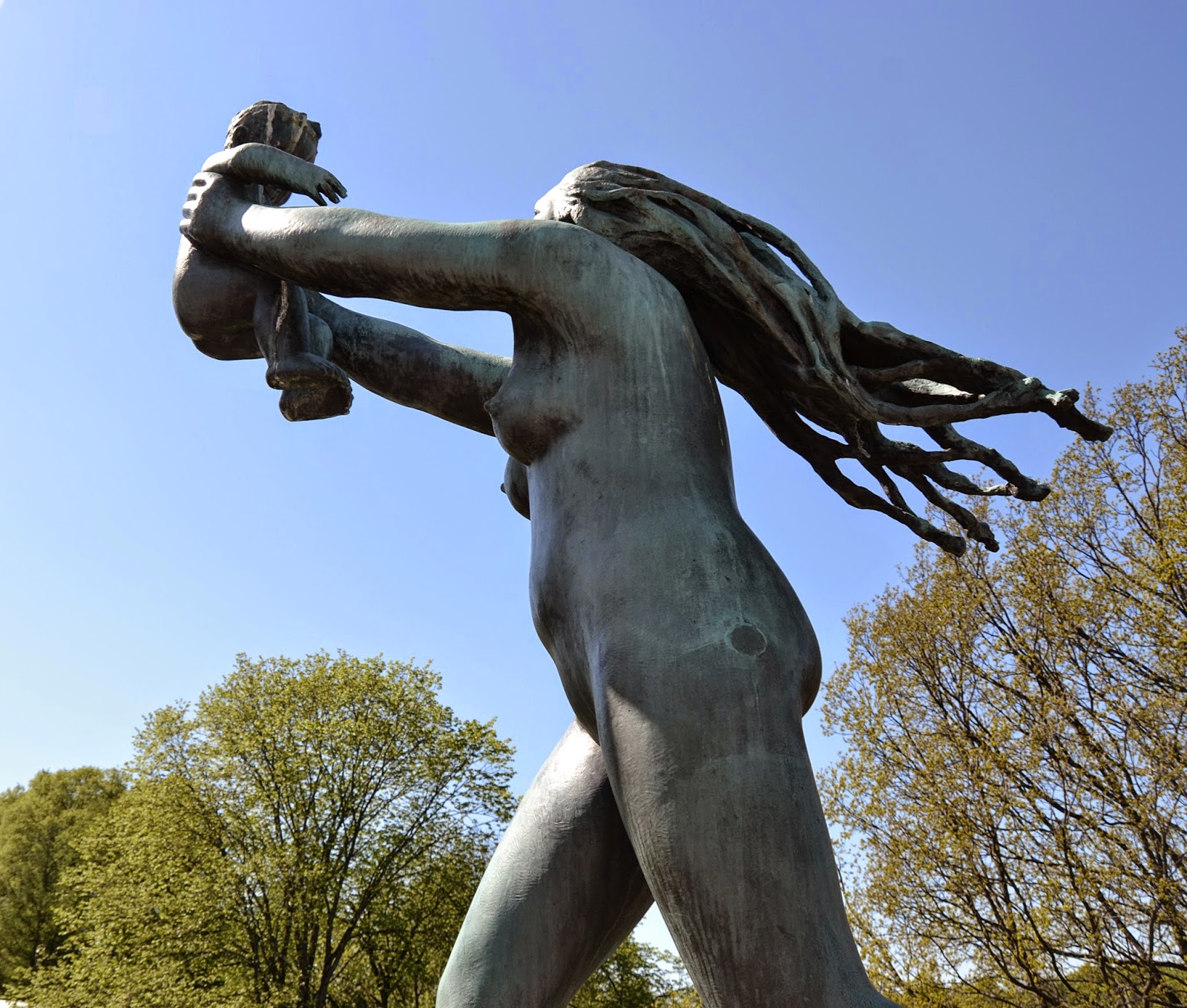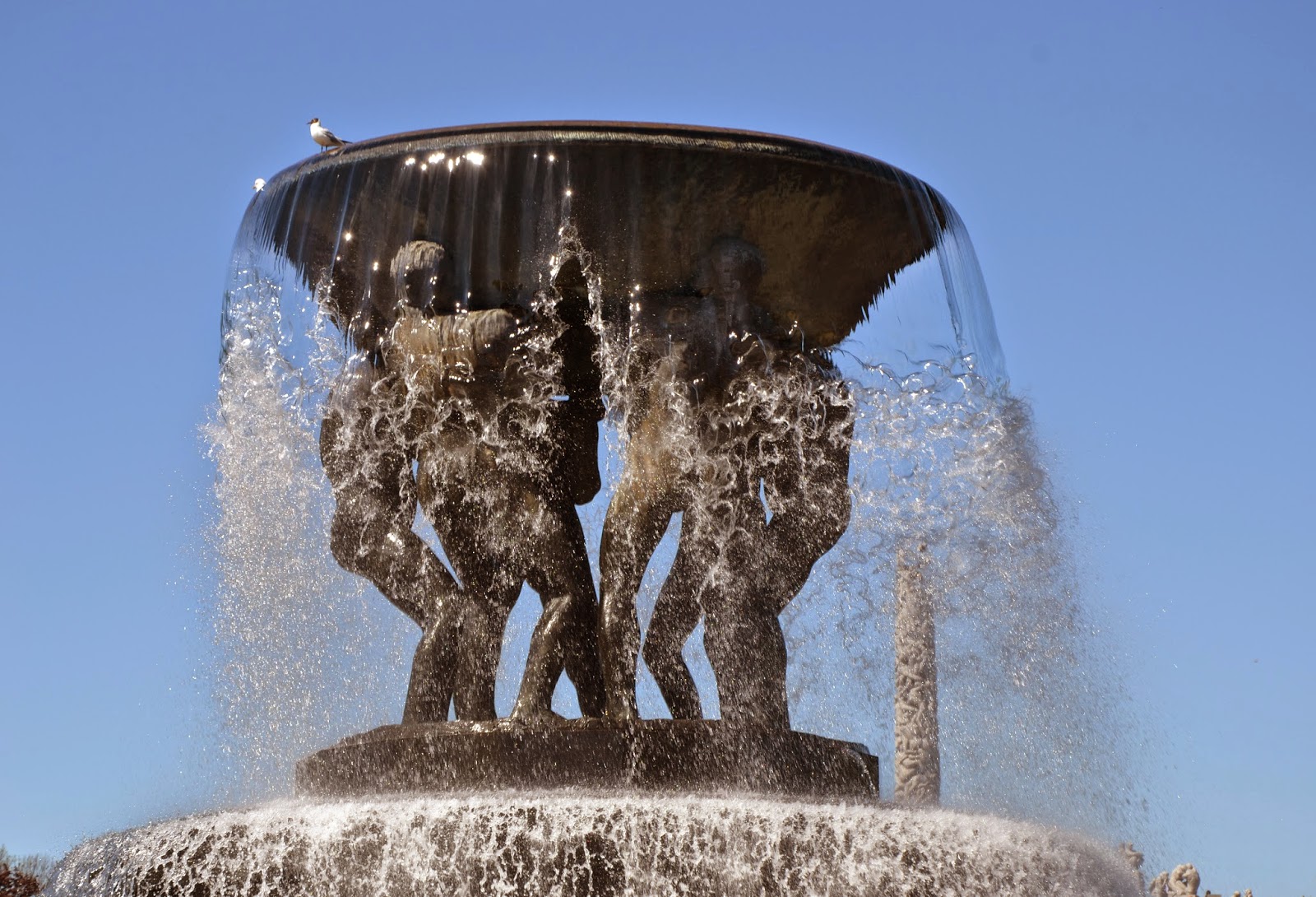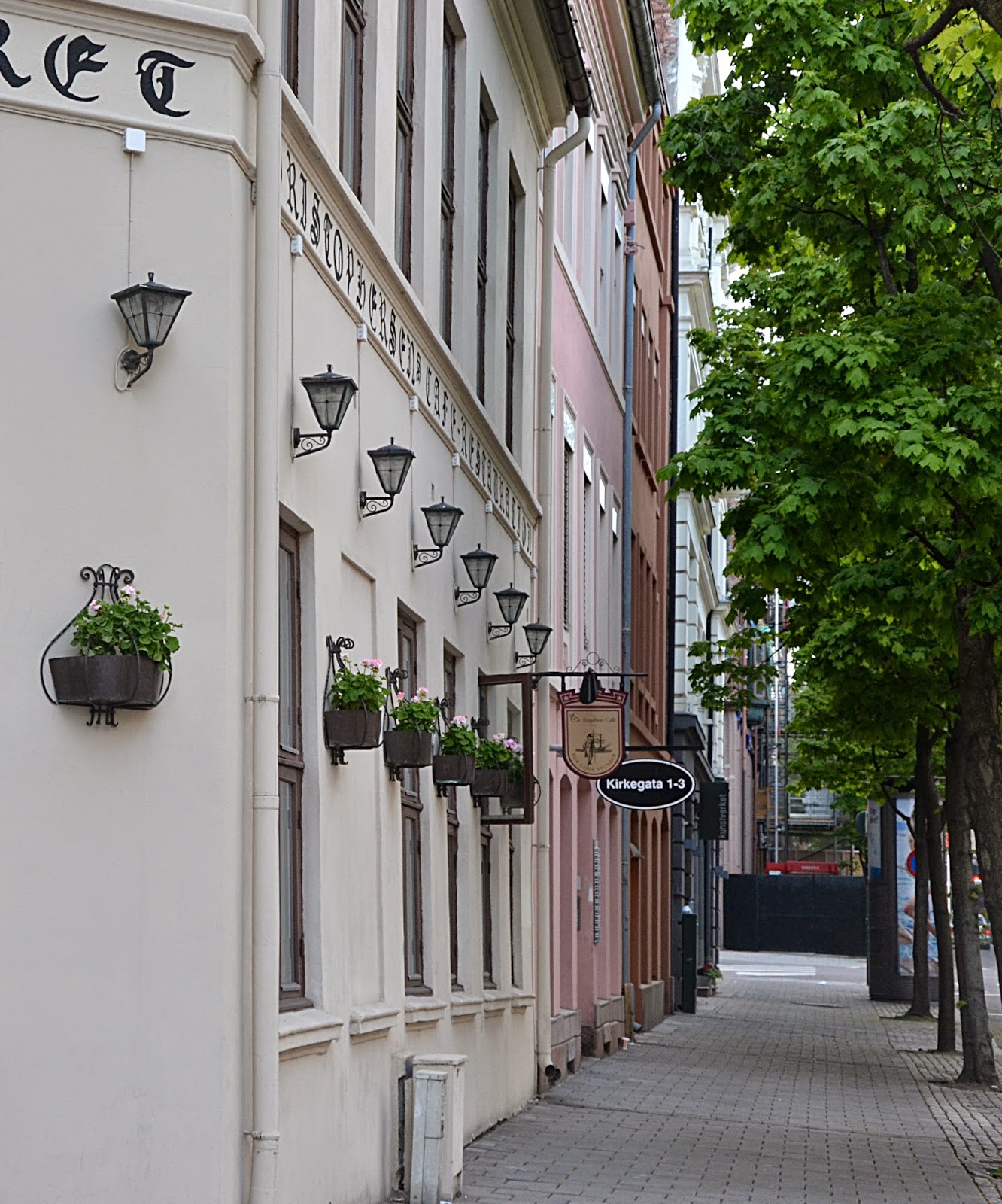Here is the continuation of the previous post - the rest of pictures, some new places and other great stuff we found in Oslo. Follow me my reader - for the last time I'll be your guide on Norway...
Frogner Park is a public park in Oslo, which contains the world famous Vigeland installation - a permanent sculpture installation created by Gustav Vigeland between 1920s and 1943. Frogner Park is the largest park in the city and covers 45 hectares and the sculpture installation is the world's largest sculpture park made by a single artist. The sculpture area covers 80 acres and features 212 bronze and granite sculptures, all designed by Gustav Vigeland. The park is said to be the most popular tourist attraction of Norway.
The Monolith towers 14,12 meters high and is composed of 121 human figures rising towards the sky (one of them is Vigeland's self-portait). This is meant to represent man's desire to become closer with the spiritual and divine. It portraits a feeling of togetherness as the human figures embrance one another as they are carried toward salvation.
Other
Even though Oslo is the biggest Norwegian city, everything seemed to be so close... OK, almost everything ;)
The Ibsen quotes (Ibsen sitat) is a permanent work of art in Oslo. Famous quotes from Henrik Ibsen's plays and poetry are incorporated into the pavement, all the way from Ibsen's old flat in Arbins gate, along his daily route to the Grand Cafe in Karl Johan. It was made in 2006 for celebration of the 100th anniversary of Ibsen's death by the Ibsen Foundation. I've cut a bit the quote, but the whole sentence is: ”Sagen er den, ser I, at den stærkeste mand i verden, det er han som står mest alene” which means "The fact is, as I see it, the strongest man in the world is he who stands most alone."
The Tiger statue in front of the Railway Station. You need to know that Oslo's nickname is Tigerstaden - "the Tiger City" or "the City of Tigers". Around 1870s Norwegian poet and writer Bjørnsterne Bjørnson in his collection of Poems and Songs called Oslo 'Tigerstaden', because he perceived the city as a cold and dangerous place. Nevertheless, the prevalence of homeless and other beggars in more recent times led to the slight rewording of the nickname into Tiggerstaden - "the City of Beggars".
Frogner Park is a public park in Oslo, which contains the world famous Vigeland installation - a permanent sculpture installation created by Gustav Vigeland between 1920s and 1943. Frogner Park is the largest park in the city and covers 45 hectares and the sculpture installation is the world's largest sculpture park made by a single artist. The sculpture area covers 80 acres and features 212 bronze and granite sculptures, all designed by Gustav Vigeland. The park is said to be the most popular tourist attraction of Norway.
Frogner Pond seen from the main bridge
Agata :)
The Fountain
Me and my stone friend watching the park ;)
The Monolith Plateau
The Monolith towers 14,12 meters high and is composed of 121 human figures rising towards the sky (one of them is Vigeland's self-portait). This is meant to represent man's desire to become closer with the spiritual and divine. It portraits a feeling of togetherness as the human figures embrance one another as they are carried toward salvation.
The Sundial (1930)
The Wheel of Life (1933-34)
Other
Odin was here!
Nobel Peace Center
Oslo Cathedral (Oslo domkirke)
Dragon style (dragestil) - variant of Norwegian National Romantic style with one of its most characteristic features - decoration in the form of dragon heads.
You shall not pass! Honestly, I have no idea why do they have double red light on pedesterian crossings.
Even though Oslo is the biggest Norwegian city, everything seemed to be so close... OK, almost everything ;)
Fountain with foam?
The Ibsen quotes (Ibsen sitat) is a permanent work of art in Oslo. Famous quotes from Henrik Ibsen's plays and poetry are incorporated into the pavement, all the way from Ibsen's old flat in Arbins gate, along his daily route to the Grand Cafe in Karl Johan. It was made in 2006 for celebration of the 100th anniversary of Ibsen's death by the Ibsen Foundation. I've cut a bit the quote, but the whole sentence is: ”Sagen er den, ser I, at den stærkeste mand i verden, det er han som står mest alene” which means "The fact is, as I see it, the strongest man in the world is he who stands most alone."
The Parliament and protests of Sri Lankan people (18th of May)
BrainCooler, obviously in national colours, and parliament and other stuff in the background.
Nice horns! :)
You probably remember the song "What does the fox say?"
Agata who is a fan of Ylvis, found a book about it!
The Tiger statue in front of the Railway Station. You need to know that Oslo's nickname is Tigerstaden - "the Tiger City" or "the City of Tigers". Around 1870s Norwegian poet and writer Bjørnsterne Bjørnson in his collection of Poems and Songs called Oslo 'Tigerstaden', because he perceived the city as a cold and dangerous place. Nevertheless, the prevalence of homeless and other beggars in more recent times led to the slight rewording of the nickname into Tiggerstaden - "the City of Beggars".
The Storting building by night
Karl Johans gate with the Royal Palace in the middle




.JPG)





.JPG)

























.JPG)













.JPG)



.JPG)

.JPG)




No comments:
Post a Comment